Table of Contents
Investing in precious metals is an excellent way to diversify your investment portfolio or build a nest egg for a rainy day. Silver coins or bars might be the perfect starting point in your precious metal journey.
Silver storage is challenging because silver has a lower value per ounce than gold bullion or platinum coins and has several unique storage requirements. And since silver is less dense than gold, it will require much more storage space for the same dollar value.
Consider storing your physical bullion in multiple locations for maximum security and accessibility. Some common silver storage areas include your home (or in your personal possession), third-party storage, and banks. Each coin storage method has its own benefits and drawbacks, and it’s important to understand these when planning your bullion storage strategy.
Storing Precious Metals at Home
The main benefit of storing silver coins at home is that they are easily accessible in an emergency. Many people invest in gold and silver bullion coins as currency in times of crisis. While fiscal currencies can fluctuate dramatically, the price of precious metals tends to remain high during emergencies and provides a reliable trading option during trying times.
Home storage doesn’t just refer to storing silver inside your house. It refers to any safe space that you can easily access at any time and may include secret locations in your neighborhood or a rented storage unit in a self-storage facility.
Ultimately, the best method for storing your silver and other precious metals will depend on your needs and situation. For instance, if you want to use precious metals as part of your retirement portfolio, you’ll need to organize IRS-approved storage.
If you want to keep gold and silver accessible in an emergency, home storage may be the right solution for you.
Space and Weight Requirements
Silver requires significantly more storage space than other coins due to its lower value and higher density. For example, $100,000 in gold weighs approximately 5.2 pounds, while $100,000 in silver would be significantly more — almost 380 pounds. Because of this massive difference in volume, silver takes up 128 times more space than gold of the same value. The more silver you buy, the more severe the problem becomes, so it’s crucial to consider silver’s unique transportation and storage requirements.
When it comes to physical bullion, most people prefer to buy their silver in the form of the one-ounce American Eagle. The most common order size for silver coins is a “monster box” containing 500 coins in 20 tubes of 25 coins each. This 500-oz box measures roughly the size of a big shoe box, with dimensions of 15″ x 8.5″ x 4.5″ and has a rough value of $16,000, depending on the market.
If you prefer to buy smaller increments, consider the 100-oz silver bar. These bars stack well together, and most mints follow similar dimensions, allowing you to buy your silver from a diverse range of dealers and mints. They’re also more affordable, making them a great first-time investment while considering your storage choices.
The Risks of Storing at Home
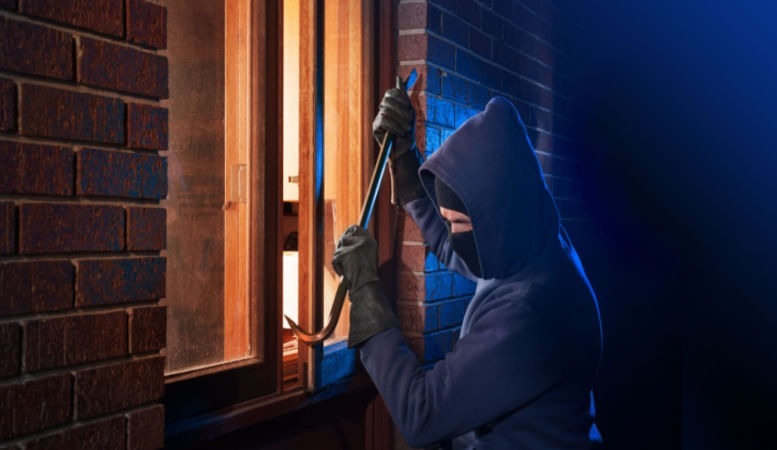
A critical factor in storing silver at home is how comfortable you are with the risk of storing valuables on your property. The most significant risks are theft and natural disaster, which can wipe out your investment in minutes. The more bullion you keep on your premises, the higher the risk of something going wrong, so it’s vital to take precautions to mitigate these concerns.
Here are our top tips for protecting your investment and safely storing your bullion at home:
- Keep it secret: The fewer people that know your plan to store precious metals, the better. In general, it’s a good idea to tell only your closest family and your attorney about your investment. If you have kids, consider their maturity and age — younger children may brag about having a safe in the house without understanding the consequences.
- Avoid becoming a natural target: High-wealth individuals are often targets for robberies and home invasions, as are famous influencers and celebrities. Consider alternative strategies for storing your silver and other metals if you are a natural target. Some potential thieves even scour social media for posts about precious metals, so never post photos of your stash online.
- Diversify your storage: Don’t put your eggs in one basket. Storing silver in several locations ensures that even a robbery or natural disaster won’t wipe out all of your investment at once. Another helpful strategy is installing a decoy safe that contains a small amount of gold or silver you’re willing to lose. Keeping this decoy safe in easily accessible locations may prevent thieves from looking for your other hiding spots.
- Invest in an alarm: Most monitoring systems won’t prevent a break-in but provide an immediate armed response that will lessen the time burglars have in your home. Even the sound of an alarm can deter most thieves from thorough property searches, reducing losses and keeping most of your bullion safe.
- Buy a fire- and waterproof safe: Silver is a relatively fragile material prone to tarnishing and erosion. Storing silver bullion coins in the most appropriate safe can protect your investment from natural disasters like fires and floods.
- Leave a letter for your beneficiaries: If you plan to leave your silver bullion behind for your children and loved ones, leave a letter with your attorney outlining where to find your silver and gold coins.
Hiding Tips
Hiding your valuable coins is a balancing act between security and convenience. Ideally, you want a hiding spot that you and your loved ones can easily access in an emergency but that’s hidden well enough that the casual burglar won’t find it.
Some of our top hiding tips include:
- Don’t hide your coins in obvious places: If you’ve seen a “smart” hiding spot on TV, like fake cookie jars, secret bookcases, or a false floor in the closet, chances are the would-be thieves have seen it, too. Stick to non-obvious secret compartments and safes to store your valuables.
- Follow the rule of threes: A good rule of thumb is to make your bullion inaccessible by hiding it three layers deep. This rule places your hiding spots behind three other layers of protection, such as floorboards, carpets, furniture, and paintings. Most casual burglars will take items they can easily grab and go without requiring intensive searching. So placing a safe in the floor under a carpet and a piece of furniture provides three layers of protection and makes it highly inaccessible to most would-be thieves.
- Consider installing a safe: If you want to store your precious metals at home, always use a safe. While no safe is 100% secure, it offers physical protection from the elements and from burglars, which most hiding places don’t provide. Safes vary dramatically in size, weight, and security, so choosing one that works for your situation is vital. Wall safes are generally less secure than floor safes, as thieves can easily remove the wall safe and crack it later, but they are more accessible in an emergency.
How to Store Silver Bullion at Home Safely
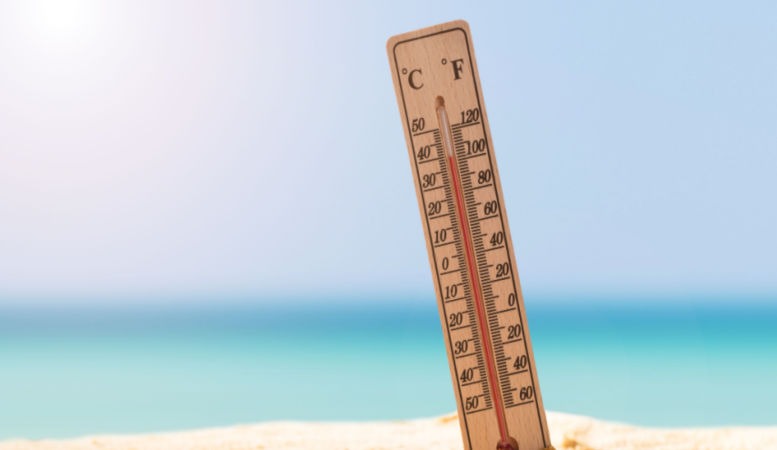
Precious metals have a diverse range of properties that affect their storage. Understanding the needs of your silver or gold coins will ensure that you avoid damaging your investment. For instance, gold is chemically inert, which means that it doesn’t react to oxygen or other compounds to produce oxides and other forms of tarnishing. That said, gold coins and bullion are vulnerable to scuffs and scratches because pure gold is an incredibly soft metal.
Silver, on the other hand, is reactive and tarnishes easily. It’s also a soft metal, requiring extra care to prevent a loss in its market value.
Humidity
The good news is that according to several silver corrosion studies, humidity doesn’t affect the corrosion rate of silver coins. Instead, silver tarnishes due to the presence of hydrogen sulfide, which, unfortunately, is prevalent in the atmosphere and environment.
This means that while you may not require a dedicated humidity control for your silver, you will still need to keep it in an airtight container to block the presence of tarnishing compounds.
Temperature
As with humidity, normal temperature ranges don’t impact silver’s intrinsic value. The main danger with higher temperatures is that they speed up sulfur corrosion because high temperatures compress hydrogen sulfide and increase its concentration, leading to more tarnishing than lower temperatures.
Security
We’ve already discussed the best practices for choosing the ideal hiding places for your bullion at home. Choose a wall or floor safe that meets your needs and that you can easily access in an emergency. Also, consider adding a decoy safe or two to distract burglars while protecting your main bullion store.
Many people think burying their gold and silver is a good, safe way to keep their bullion, but this method has more risks than benefits. Firstly, you’ll need to dig your hole at night to preserve secrecy, limiting your access to the bullion when you need it the most. Secondly, metal detectors can pick up signals from up to 8″ underground, so you’ll need to dig relatively deep to bury your bullion.
An added challenge of buying your coins is that it’s almost impossible to control humidity. Even silica gel will struggle to absorb all of the moisture around an earthen hole, so you’ll need to combine several storage methods to protect your bullion from the elements.
Choosing a Safe
Safes come in a massive range of types and sizes. A wall safe offers reasonable protection while remaining accessible, while floor safes are usually more secure but harder to get to.
Try to find safes that are airtight and waterproof. While you should always keep your valuable coins in dedicated storage boxes, having an environmentally controlled safe adds an extra layer of protection against corrosion and natural disasters.
A safe’s weight is also an important consideration. Smaller safes usually weigh around 100 pounds, which is relatively easy to carry away. Unlike what you see in movies, most thieves prefer to take the safe with them instead of trying to crack it on the premises. Lighter safes are also smaller, which can be a problem if you’re only storing silver coins.
Heavier safes are often more secure but require expert installation. Unless you completely trust the installation company, you may risk giving away that you’re storing bullion and coins at home.
The Best Containers to Store Silver Coins
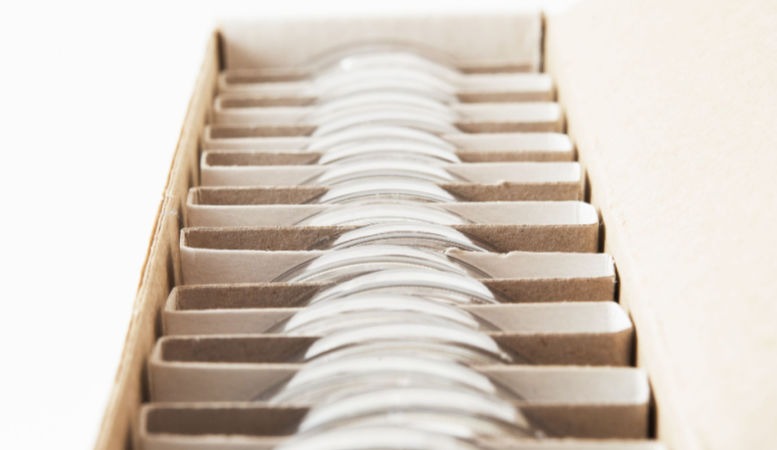
Choosing the right storage container for your precious metal is essential to preserving its value. Some storage materials may look attractive and be an ideal solution for displaying your coins but may do more harm than good as long-term storage.
Your containers should be airtight to stop rust and corrosion. Silver is especially vulnerable to sulfur, which is everywhere, including in the air. Copper tends to rust when exposed to oxygen, and some metals corrode faster in high-humidity climates.
The two best storage materials for precious metal coins and bullion are lined wooden boxes and Mylar containers. Wood storage works best in low humidity, while Mylar is an excellent choice for most situations.
A common mistake that many people make when first storing gold and silver coins is storing them in PVC sleeves or flip files. PVC isn’t a good coin storage material as it degrades rapidly when exposed to heat and light. One of the compounds released during this breakdown is hydrochloric acid, which can seriously damage any precious metal.
PVC is also gas impermeable, which means that trapped moisture cannot escape, so it will end up corroding vulnerable metals.
Mylar is the go-to alternative to PVC. It has many of the same properties but doesn’t degrade when exposed to sunlight or heat. Unfortunately, Mylar is gas-impermeable, which means it will also trap any moisture, but this usually isn’t a problem in low humidity environments. In high-humidity situations, adding a pack of silica gel will remove most of the ambient moisture, protecting the coins from water damage.
A valuable tip for storing silver is placing activated charcoal in the storage space. Charcoal is an excellent filter and absorbs many airborne contaminants, including sulfides. You can buy charcoal from pet shops — where it’s used in filters for fish tanks — or any other store that sells charcoal filters.
The final consideration for precious metal storage containers is their stackability. Since space is usually a concern for silver, you want to find a space-efficient solution. In general, coins take up more space than bars — just think about how much empty space is in a monster box of coins — but are easier to sell off separately, making them the more versatile option.
When choosing storage containers for your coins, a final rule is to keep different metals apart. Each metal has its own temperature and humidity requirements, which may often clash or interfere with each other. For instance, while silver and gold don’t react with oxygen, copper and bronze do and will quickly tarnish. Some metals react poorly to high temperatures, while others corrode when exposed to high humidity.
The best way to avoid this problem is to store each type of metal separately in conditions suitable for that metal.
Using Third-Party Storage for Silver Bullion
Third-party storage can refer to a wide number of options, including self-storage all the way to segregated vault storage services to keep your coins and bullion safe.
In general, we strongly recommend against self-storage for coins. While they seem cost-effective, these services tend to have severe security issues that will put your bullion at risk. Employees at self-storage facilities undergo far less scrutiny than bank or vault officers and often resort to theft to make a quick profit.
Self-storage containers tend to be extremely insecure. Even the best locks are easy to pick, and most security measures on the facility premises are more for show than actual deterrence. Combined with the fact that these lots are often in industrial neighborhoods, you’re practically asking for people to come and take your bullion.
A much better option is a professional vault service. These vaults give you direct title over your holdings, granting you access at any time. All you need to do is call the facility and schedule a secure appointment to audit your bullion. Some facilities even provide the contact details of a third-party auditor who will periodically visit the vault and verify your holdings on your behalf.
While vaults are more secure than self-storage, you still need to do your research before stashing your coin collection. Personally visiting the facility and knowing the vault manager is an essential first step in ensuring that you’re placing your investment in trustworthy hands.
Using Banks as Storage
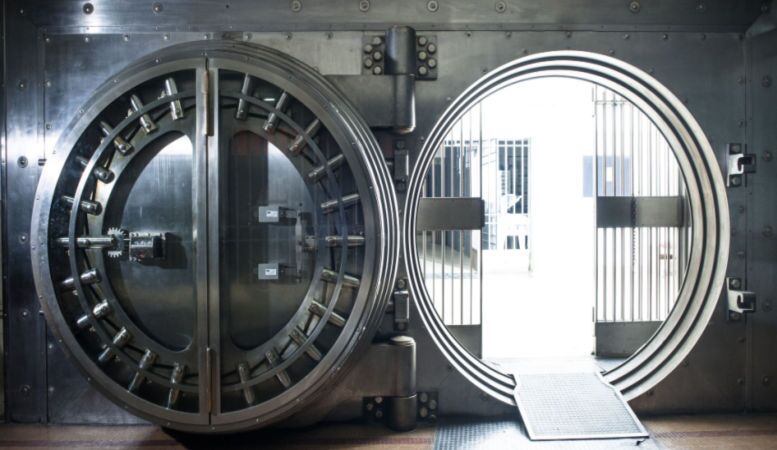
If you’re using bullion as part of an IRA or other tax-advantaged retirement plan, you’re legally obligated to keep your coins in an IRS-accredited facility such as a bank. However, if you’re storing your bullion as an emergency currency measure, you don’t have this limitation and can keep your silver wherever you want.
People consider safety deposit boxes for storing silver coins because of security. Banks have access to high-level security measures that simply aren’t available to consumers. As a coin storage option, safe deposit boxes represent a great intersection between convenience and safety. However, despite their advantages, safe deposit boxes aren’t perfect and have several flaws you need to keep in mind.
A particularly serious flaw with a safety deposit box is accessibility. You can only access your coins during the bank’s operating hours, which means that you won’t be able to withdraw your silver during bank holidays or in other times of crisis.
And as banks are subject to federal and state laws, the IRS and other government agencies have the authority to freeze or seize your safety deposit box without your consent. Common reasons to do so include claims of delinquency or your beneficiaries failing to access your bank safety deposit box within a certain time after your death. Before you can access your bullion, you’ll have to go through a lot of paperwork and trouble if this happens.
Whether or not a bank safety deposit box is the right option depends largely on your reasons for buying bullion. If you’re concerned about emergencies or dislike traditional bank business practices, it’s probably not the best option for you. However, if you prize security and convenience, then safe deposit boxes may be the perfect coin storage solution for you. They’re also a great way of diversifying your holdings to prevent losses to your entire investment.
The Difference Between Storing Gold and Silver Coins
While the basics of storing precious metals remain the same — stick to reputable bank safety deposit boxes, vaults, or home safes — gold and silver have slightly different storage requirements that can affect their value.
The main difference between storing gold and silver is space. Gold is denser than silver, so it takes up less space for the same amount of weight. Also, gold is more valuable per ounce than silver, meaning you’ll need to buy a lot more silver weight to get the same value as an ounce of gold. These two factors combined mean that you’ll need 128 times more space to store an equivalent value of silver than gold. That’s a lot more safety deposit boxes or safes you’ll need to buy!
Another difference concerns gold’s and silver’s corrosion resistance. Both metals are stable at room temperature and don’t react to oxygen or water, so you don’t need to worry too much about humidity or temperature control.
However, silver reacts to hydrogen sulfides found in the air and even in oils on our skin. Silver requires additional care while handling to prevent unwanted tarnishing that can potentially decrease the value of the coin. If you’re storing your silver coins in a bank, be sure to get a completely airtight deposit box to avoid introducing tarnishing compounds.
Both metals are also very soft, so we recommend using a soft cloth when handling and storing these coins to prevent scratches and value-reducing abrasions.
How to Avoid Tarnishing Your Silver Coins
While silver doesn’t react with oxygen or hydrogen, it is extremely reactive to sulfur compounds. Unfortunately, these compounds are naturally present in the environment and almost impossible to avoid. For instance, you can find sulfur compounds in fossil fuels, certain foods (especially alliums such as garlic and onions), rubber, latex, and certain paints.
Ideally, you won’t handle your silver bullion too often, but it’s important to stick to several best practices when you do. It’s much easier to prevent tarnishing and other imperfections than to try and fix them in the future. Remember that even small mistakes can affect your investment’s numismatic value.
Some best practices for handling silver include:
- Avoid latex or plastic: Most latex and plastic gloves have preservatives and lubricants that can leave tarnishing compounds behind. Silver itself is reactive to the sulfur in latex, making latex gloves extremely damaging to your bullion. Professional jewelers use gloves made from soft cloth to create a barrier between the metal and their hands without adding any corrosive materials.
- Don’t use tweezers: You may think that not handling your silver coins with your hands is the safer option, but tweezers will quickly leave abrasive marks on the soft surface of your bullion, affecting its value.
- Prepare a special handling area: Lay down a velvet cloth to make a protective barrier between the bullion and the hard table surface. This layer will prevent accidental scratches and scuffs and provide a gentle landing in case you drop your bullion while working with it.
- Handle your bullion correctly: You can work with your bare hands if you’ve washed them thoroughly with soap or hand sanitizer (or both!) beforehand. Always hold the bullion on the edges to prevent surface damage, and avoid breathing or talking directly over the metal.
- Never handle tarnished and untarnished materials together: Tarnished metals will often have some of the sulfides left on their surface, which they can transfer to an untarnished surface. It’s vital to never store or handle new and tarnished bullion or coins together, as it can speed up the corrosion of the pristine metal. Always start by working with untarnished bullion and leave any tarnished pieces for last.
A question we often hear is whether you should clean tarnished silver coins or bullion. Many people think that tarnishing ruins the intrinsic value of a coin, but the truth is that overzealous cleaning is much more damaging to a coin’s value than tarnishing.
Most collectors prefer tarnished and uncleaned bullion and coins to improperly cleaning options. Improper cleaning can remove the outer layer of the coin, making it lighter and less valuable. It can also remove distinguishing features and cause abrasions that make the metal prone to future corrosion.
Surprisingly, many enthusiastic coin collectors like the appearance of unique discoloration (often called the patina), which often takes centuries to form. A well-preserved precious metal coin is significantly more valuable than the one you’ve scrubbed to within an inch of its life.
While tarnishing may increase the value of your bullion, dirt and grime won’t. The best reason to clean your bullion is to remove this surface dirt without affecting the underlying metal. If you store your coins in airtight safety deposit boxes, dirt and grime shouldn’t be a problem. However, if you do plan on cleaning your coins and bars yourself, make sure to follow certain cleaning best practices. These include:
- Don’t use abrasives or special cleaners: These cleaners often contain acids and corrosive compounds that eat away at the patina. These compounds can also corrode the underlying metal, reducing its value. Rather stick to mild soap and water and avoid any harsh abrasive motions. Remember that you want to preserve the tarnish and simply remove any dust and gathered grime.
- Use an ultrasonic cleaner: An ultrasonic cleaner uses sound waves to gently clean away surface grime. A combination of ultrasonic cleaning and mild soapy water is usually enough to remove most dirt with minimal damage to the underlying coin. Be sure to wash each bar or coin individually to avoid cross-contamination and change the water solution regularly.
Contact Us at Oxford Gold Group for Silver Bullion & Coins
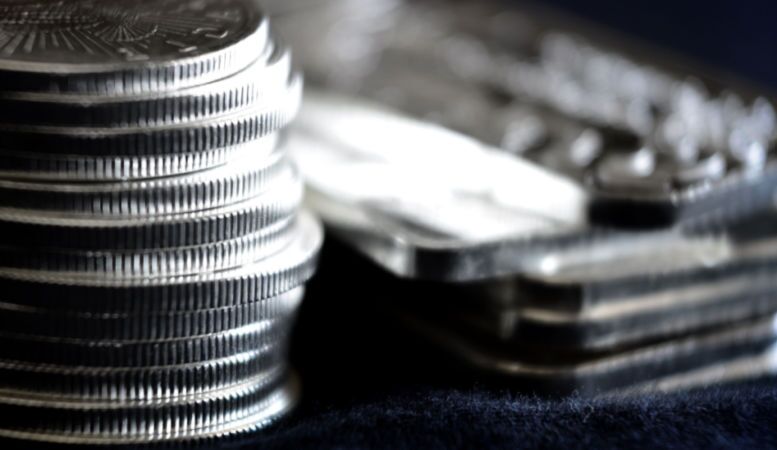
At Oxford Gold Group, we’re here to help with your silver investing needs, whether you’re interested in Silver IRAs, bullion, or coins. Contact us at (844) 446-0639 to get started.








